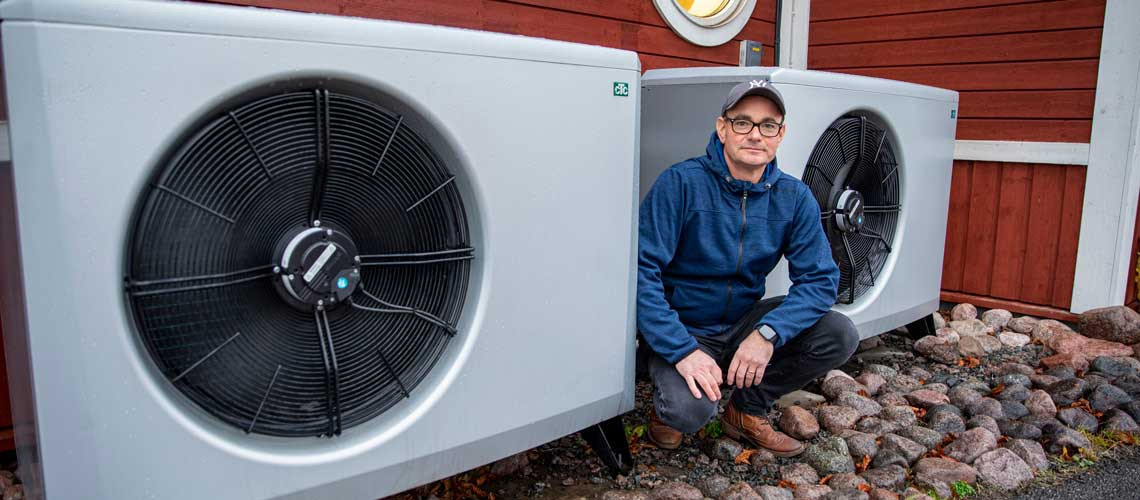"It's very important to have a good heating system. The environment we provide for our guests must be pleasant, allowing them to feel comfortable and relaxed," says Badholmen's co-owner Kristian Syrén.
The Badholmen restaurant is listed in the White Guide and is one of the best in Småland. It's located on an island in the middle of the entrance to Oskarshamn's busy harbour.
Badholmen's panoramic windows do not only present a beautiful view, they also provide a risk for temperature drops, especially on windy and cold days. But the restaurant owners have invested in two air/water heat pumps from CTC that ensure an even and comfortable indoor temperature.
"In addition to keeping the customers comfortable, they also provide a good working environment for the employees," says Kristian Syrén.
Easy to run
The heat pumps not only ensure that the large restaurant area has the right temperature, they also heat eight hotel rooms on the upper floor.
"We've had the CTC solution for 18 months now, we think it works very well. The indoor tempera-ture is consistent, and despite our many large windows, the capacity is more than sufficient."
Facts:
The Badholmen restaurant is situated on an island at the entrance to Oskarshamn's harbour. The restaurant accommodates 300 guests and is listed in the White Guide. There are eight hotel rooms in the same building on the upper floor.
Badholmen has two CTC EcoAir 520 M air/water heat pumps installed. These have variable speed compressors, which adapt to the different power requirements for heating the building.
When the heating or hot water demand is higher, the heat pump increases its output, when less heat is needed, the heat pump decreases its speed to adjust to the lower demand.




